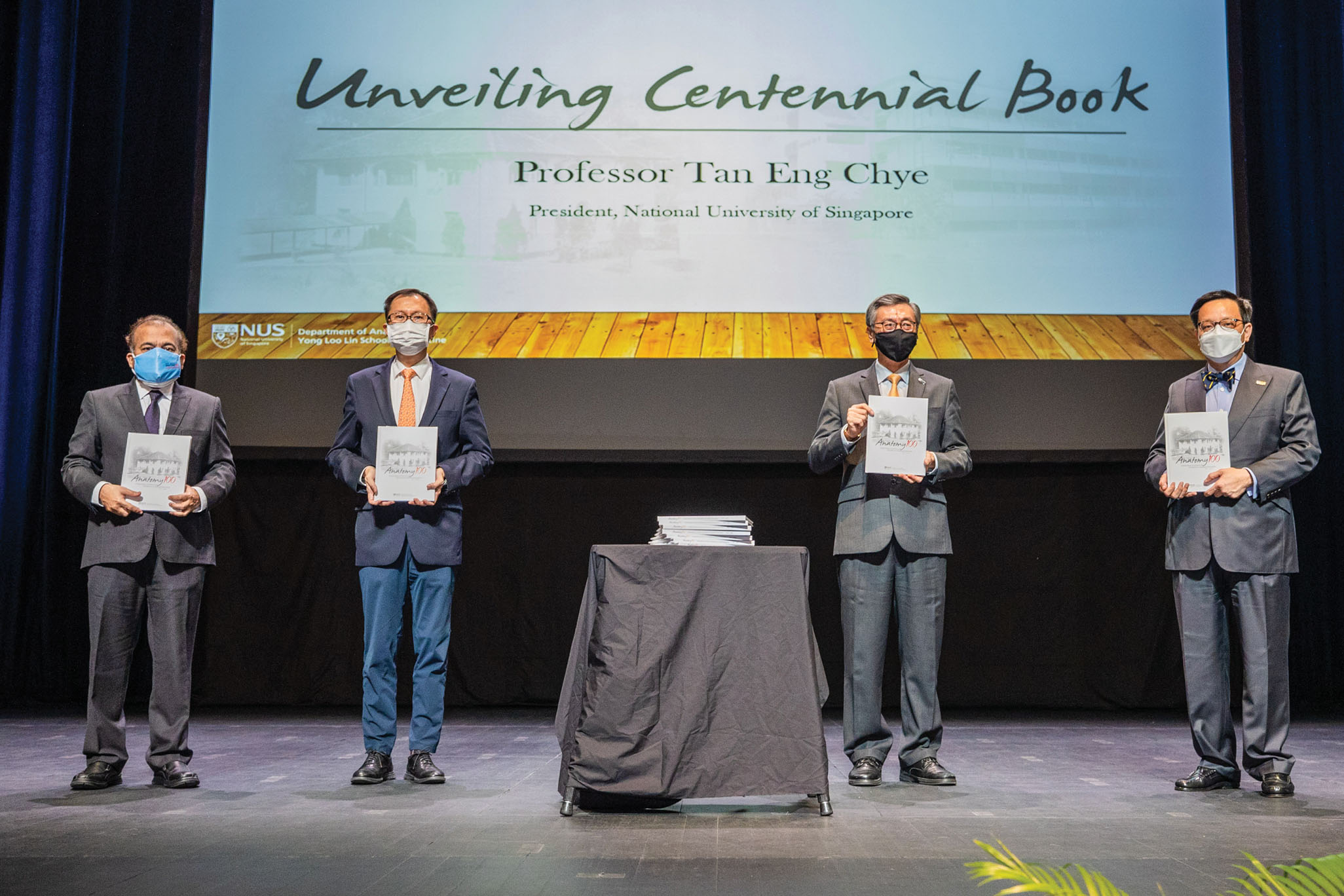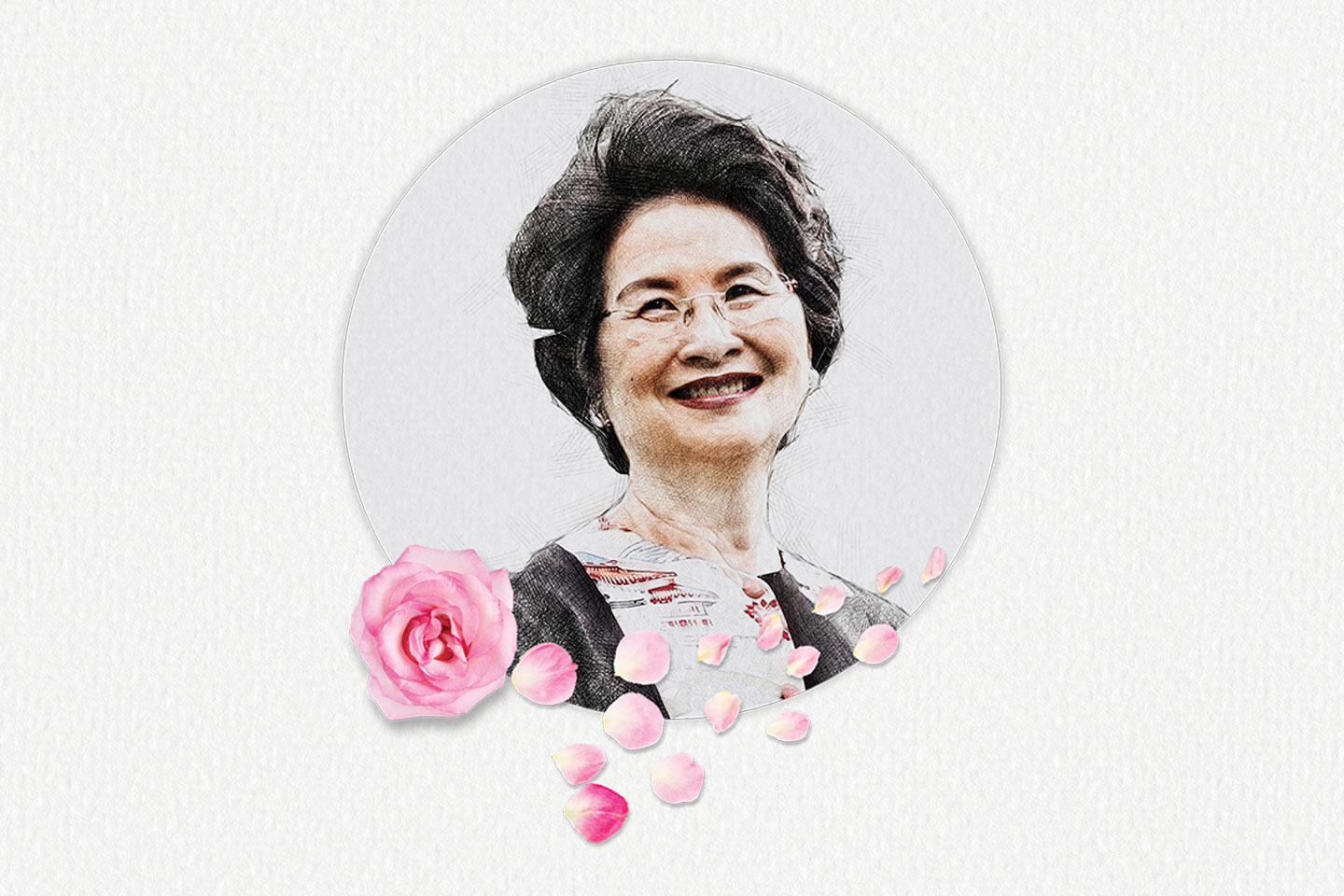
Issue 42 / May 2022
Dean’s Message

Dear Reader,
W
e are nearly halfway into the third year of a global pandemic. Although the severe constraints in vaccine supply that the world faced last year have now eased, the World Health Organization (WHO) says that we still have a long road ahead to reach the global target of vaccinating 70% of the population of every country.* That long road has been lengthened by the war in Ukraine.
In Singapore, vaccinations, public health restrictions and safe practices have kept Singaporeans largely safe from the rampaging virus, which has undergone multiple mutations in its worrying dance through the letters of the Greek alphabet to its current manifestation as Omicron. But life goes on. Employees are returning to a once-familiar routine of working in offices; holiday travel is picking up. In these peri-pandemic times, we welcome the Medicine Class of 2027 and the Nursing Class of 2025. While the shape of the world in which they will graduate to practice is unclear, the School will do our utmost to prepare these future healthcare professionals for the challenges they will face.
Our students are however not just good at biomedical science; many pursue interests outside of their studies that range from music to martial arts to community service. Others, like fourth year Medicine student Faye Ng Yu Ci, write award-winning poetry. Her literary skills has won her the prestigious Regent’s Prize in Poetry awarded by the Annals of Internal Medicine, a leading American medical journal. The prize is awarded to the best poem published in Annals each year.
Ms Ng is the youngest recipient and only undergraduate as well as the first Singaporean and Southeast Asian to receive the Prize thus far. Her entry, titled “A Pink Crease”, was inspired by a patient she met during her third year of medical training, during a General Surgery posting to a hospital. “I love writing because it allows me to reflect on myself and my experiences,” she remarked. “So often in the wards, we are so overwhelmed – by the deluge of medical information, by expectations from doctors and sometimes patients and their families, that there is so little time to process the emotions and conflicts associated with sickness and suffering, which is such an integral yet often neglected part of medicine.”
While Ms Ng finds expression through poetry, others do so through the search for solutions. On the research front, we have interesting news from our cancer scientists. Working with colleagues at St Jude Children’s Research Hospital in the United States, NUH oncologist Dr Shawn Lee has shown that it is important to consider race and genetic ancestry in treating acute lymphoblastic leukaemia in children. He and his colleagues studied the impact of genetic ancestry on childhood acute lymphoblastic leukaemia (ALL) in more than 2,400 children. ALL is the most common type of childhood cancer. The team found that several molecular subtypes were associated with East Asian ancestry (e.g. Chinese children). They also established that South Asian (e.g. Indian) and East Asian children have one of the best survival outcomes in the world because their bodies respond to and metabolise commonly used chemotherapy drugs differently. The findings were published in the March edition of JAMAOncology.
Another piece of good cancer scientific work: In the fight against cancer, the development of efficacious drugs is only half the battle; equally important is how drugs may be delivered efficiently and safely to the diseased sites in the body. The challenge of drug delivery is especially pertinent for RNA therapeutics which target an important immuno-modulatory receptor, RIG-I. When activated by certain types of RNAs, the receptor can initiate immune responses to kill cancer cells. As RNAs are unstable and fragile by nature, RNA-based drugs must be packaged in suitable carriers to prevent degradation, and promote efficient uptake by target cancer tissues.
NUS Medicine scientists and partners from Lee Kong Chian School of Medicine, and A*STAR’s Genome Institute of Singapore (GIS) have demonstrated that nano-sized vesicles released by red blood cells are a viable platform for delivering immunotherapeutic RNA molecules to suppress breast cancer growth and metastasis. Assistant Professor Minh Le from the Institute for Digital Medicine (WisDM) and Department of Pharmacology at NUS Medicine, who led the study, explained, “With the discovery of these vesicles’ ability to deliver therapeutics effectively to targeted receptors, we hope that our research can lead to better treatment outcomes for cancer patients. The correct homing of the therapeutics to diseased cells is also critical in minimising off-target effects that can result in toxicity.”
And finally, though certainly not least, Hand, Foot & Mouth Disease (HFMD) is a generally mild, contagious viral infection common in young children that is endemic in Singapore. While most HFMD patients experience common symptoms such as sore throat, fever, ulcers, blisters and lesions on the palms and soles, approximately 36.9% of HEVA71-related HFMD hospitalisations develop neurological complications, of which 10.5% are fatal. Researchers from the Department of Physiology have found that a selective antagonist of the CXCR2 viral protein receptor, is effective in significantly lowering disease severity. This will likely go on to be developed as an effective therapeutic approach to manage the effects of neuropathogenicity in severe cases of HFMD.
In these uncertain times, our work continues unabated. I hope you enjoy reading about it.
Yours sincerely,

Chong Yap Seng
* WHO Director-General’s remarks at Session 2 – Potential Opportunities for Innovation and Collaboration COVID-19 Dialogue with Ministers of Health – 3 March 2022.




